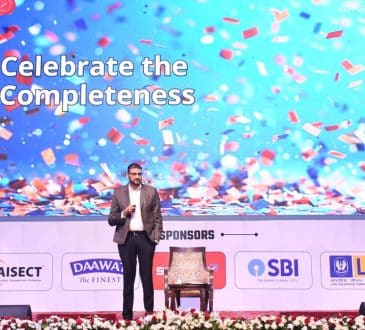A Guide to Distributed Leadership

The future of work is here – and it’s distributed. As a leader, are you prepared to effectively manage and inspire teams in a distributed world?
Atlassian, one of the world’s most successful remote-first companies, has unlocked the secrets to mastering distributed work. I recently spoke with Atlassian’s Annie Dean, head of their aptly named “Team Anywhere” program, to get her insider’s perspective on the keys to thriving in the distributed future. Distributed refers to work that doesn’t happen shoulder-to-shoulder. Teams spread across locations and time zones might be working from home, or might meet in the office.
For any leader searching for strategies to unite, motivate, and develop talent in the new virtual workplace, Annie shared invaluable lessons from the Atlassian playbook to build an award-winning culture across global teams, avoid pitfalls other companies faced in the shift to remote work, and execute a distributed model that boosted productivity, engagement, and competitiveness.
Reasons for Anywhere Work
Atlassian adopted their “Team Anywhere” distributed model for three key reasons, Annie explained: To access the best talent globally, increase employee engagement through flexibility and empowerment, and refine collaboration tools by testing them internally first before releasing to customers. Elements of their program include allowing employees to choose where they work daily rather than mandating office attendance, enabling staff to work remotely for up to 90 days per year from locations outside of their home base, and bringing teams together for regular “team gatherings” to bond and develop strategy.
A major challenge for companies adopting flexible models is training managers to lead effectively in a distributed environment. At Atlassian, they don’t see this as an issue solved by mandating office attendance. Instead, they are redesigning how work gets done by focusing on three pillars: helping managers and teams spend time on the right priorities rather than defaulting to packed calendars; setting clear objectives and linking work to strategic goals tracked in their Atlas tool to enable evaluating success; and facilitating connections between teams to unblock work.
Atlassian has 11 offices and a thriving office culture. They measure whether team gatherings help build connections more effectively than sporadic office days. The emphasis is on equipping managers to lead distributed teams, not emulating colocated work. As Annie explained, assumptions that mandatory office attendance drives positive outcomes may be overstated. Their research found team gatherings increased connection by 30% for 4-5 months, while sporadic office attendance showed no impact.
Productivity in Remote Work
Research by Nick Bloom at Stanford University shows fully remote teams often have lower productivity long-term due to challenges collaborating and coordinating. However, hybrid models with a mix of office and remote work tend to be most productive. I shared my perspective with Annie that certain types of work are best suited to remote or in-office settings. Individual focused work, asynchronous communication and video conferences tend to be better remotely. Highly collaborative work, nuanced conversations, relationship building, and mentorship are often better in-person.
Annie agreed balancing remote and in-person time is key for optimizing productivity. Mentorship remains an area they are refining for remote teams. But tools providing recorded trainings and transparent company meetings help to facilitate learning. For example,employees can view recordings of some of Atlassian’s most important leadership meetings to gain insights into strategy and executive thinking.
Occasional in-person time via team gatherings seems more effective for building connections than sporadic office days. With intentionality, Annie believes teams can coordinate effectively in a virtual setting Atlassian focuses on having clarity into goals and objectives, then figures out how to coordinate and align efforts virtually to achieve them.
I noted that research indicates potential challenges with mentoring and on-the-job training in fully remote settings, as it’s harder for younger workers to build trusting developmental relationships purely online. Annie acknowledged this is an area Atlassian is still working on. But solutions may include facilitated onboarding programs with managers, targeted in-person gatherings, and repeatable learning processes leveraging tools. The sheer amount of information transparency available today also creates countless learning opportunities.
The Distributed Future of Work
Looking ahead, Annie would like to move beyond the remote versus in-office debate, noting most large companies already distribute work across multiple offices and floors. Her vision is rethinking how work gets done to empower employees, facilitate work-life balance, and attract top talent globally.
She sees three forces shaping the distributed work future. First, a generational shift as younger leaders who grew up comfortable with remote work and digital collaboration take over leadership roles from older generations less accustomed to leading virtual teams. Second, the talent migration underway due to the Great Resignation, with employees gravitating toward flexible, remote-friendly companies and forcing more rigid companies to adapt. And third, the rise of technologies like AI, collaboration tools, and virtual reality that will enable seamless remote interactions at scale.
The future is undoubtedly distributed. While leadership mindsets, corporate culture, and availability of technologies influence how distributed models evolve, the overarching opportunity is immense for companies to unlock productivity, talent acquisition, and competitive advantage through flexible policies. Atlassian provides a compelling model of how strategic implementation of distributed policies can positively impact employee engagement, retention, and overall performance.
However, a one-size-fits-all approach to distributed work is unlikely to succeed. Companies must thoughtfully examine how their culture, leadership preferences, workforce demographics, and business model intersect with the possibilities of flexible policies. They must then develop a distributed strategy aligned to their unique needs and strengths, while being willing to iterate as they learn.
With careful planning, clear communication, and compassion for worker needs, distributed models can empower people to do their best work, maximize work-life harmony, and come together when necessary to build bonds that support outstanding collaboration. Companies that leverage technology and evolve their talent practices to facilitate hybrid models where employees move fluidly between in-person and virtual interactions will win in the future.
The most critical factors will be training leaders to effectively guide distributed teams, intentionally designing opportunities for relationship development and mentorship, and providing the tools to coordinate work and access information seamlessly from anywhere. Companies that invest in these areas will benefit from the diverse perspectives, deeper talent pools, and improved employee satisfaction that distributed policies unlock. That’s what I tell my clients when helping them figure out their flexible work models, and Annie provided some excellent insights on how to make remote work successful.
Conclusion
While the transition may be challenging, forward-looking organizations recognize that distributed is the new reality of work. Companies who embrace flexible models thoughtfully, like Atlassian, will reap the rewards in talent acquisition, innovation, productivity, and employee fulfillment. With the right strategies and culture, businesses can thrive by embracing the distributed future.
Have you read?
Ranking: Richest Golfers in the World, 2023.
These Largest Cities Will Face Extreme Climate Change Threats.
These All-American Football Movies Inspired CEOs and Management Consultants The Most.
These Are Most Disliked Companies in America, 2023.
Report: Countries That Attract the Most International Migrants.
Bring the best of the CEOWORLD magazine's global journalism to audiences in the United States and around the world. - Add CEOWORLD magazine to your Google News feed.
Follow CEOWORLD magazine headlines on: Google News, LinkedIn, Twitter, and Facebook.
Copyright 2025 The CEOWORLD magazine. All rights reserved. This material (and any extract from it) must not be copied, redistributed or placed on any website, without CEOWORLD magazine' prior written consent. For media queries, please contact: info@ceoworld.biz








